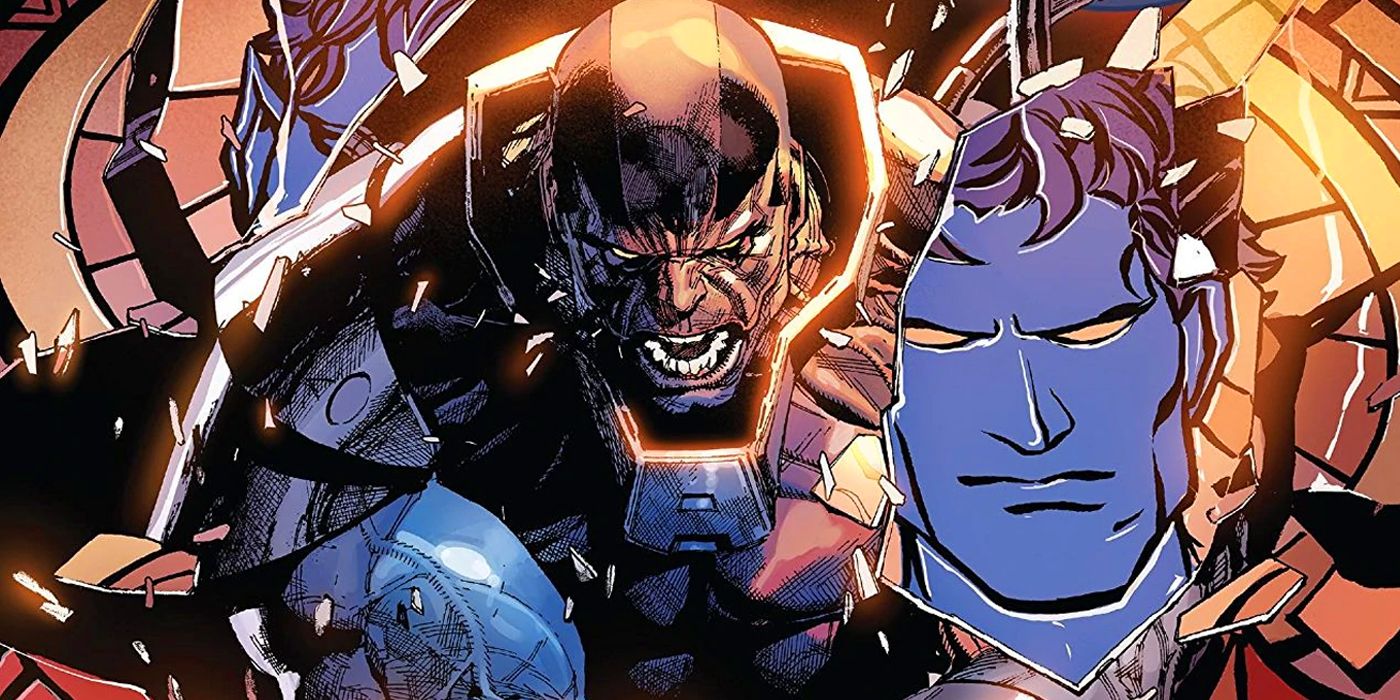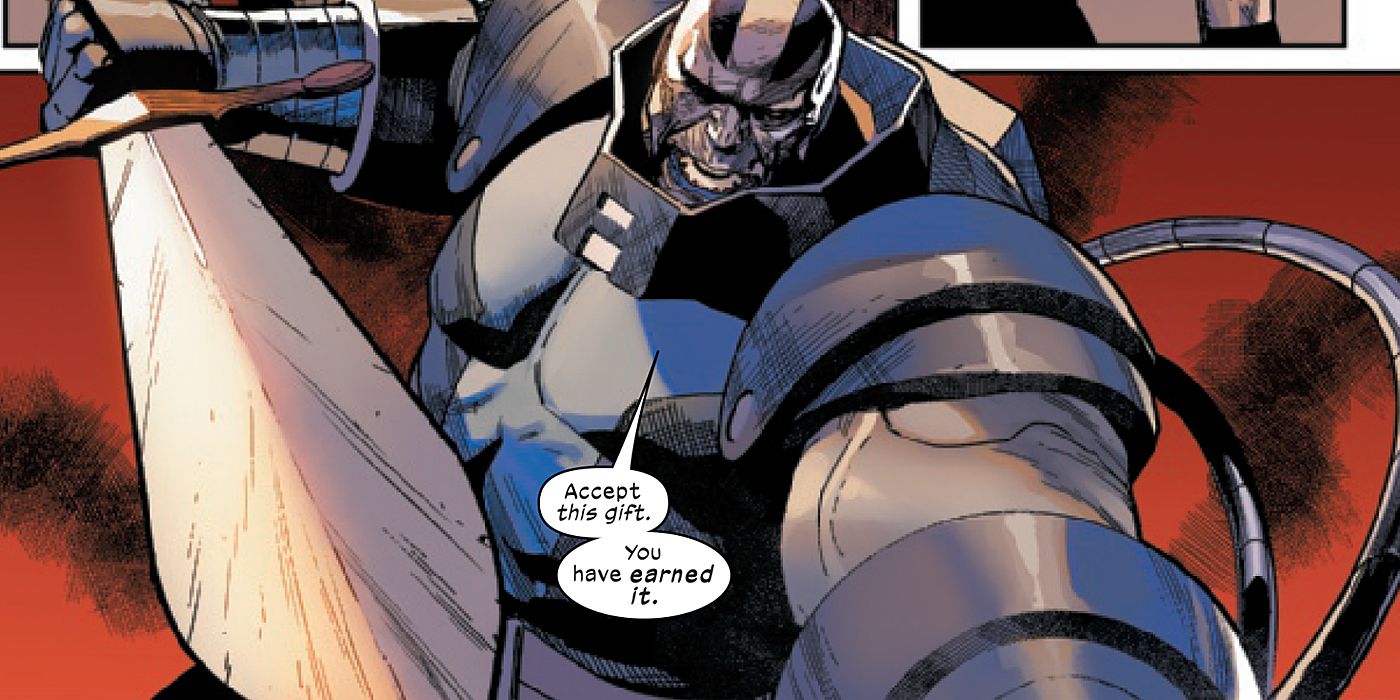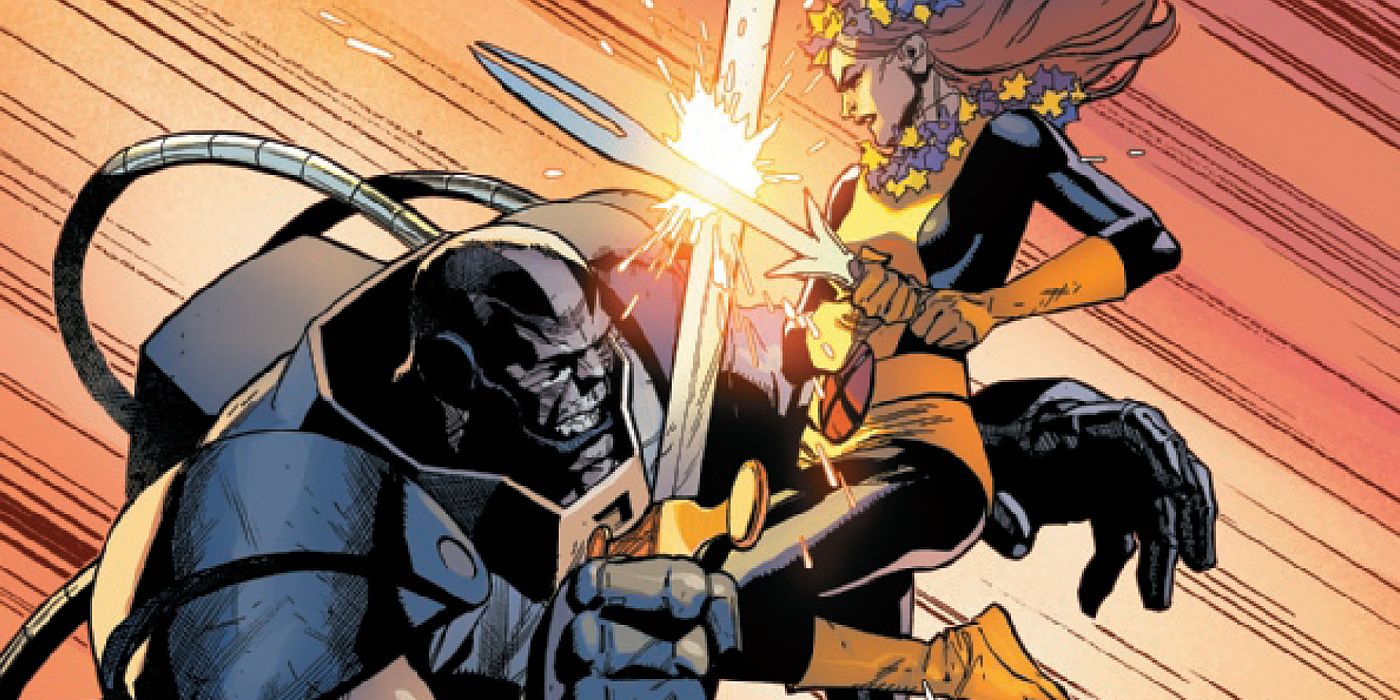WARNING: The following contains spoilers for X-Men #7, by Jonathan Hickman, Leinil Francis Yu, Sunny Gho, VC’s Clayton Cowles and Tom Muller, on sale now.
The X-Men have felt doomed for a generation. While mutants were once positioned as the inevitable evolution of humanity in the Marvel Universe, the 21st century has seen the mutant population ravaged by tragedy after tragedy.
After a surprise Sentinel attack on the mutant nation Genosha wiped out 16.5 million mutants, Marvel’s mutant population suffered a more personal attack when Scarlet Witch depowered most of the world’s mutants in House of M. With the now-famous words “No more mutants,” the Avenger and her reality-reshaping powers left Marvel with only 198 empowered mutants on M-Day. While the sheer scope of the Genosha attack made it a greater tragedy, Wanda Maximoff’s close history with the X-Men made her actions feel like the ultimate betrayal to many mutant heroes.
However, things are finally starting to look up for mutants on their new island nation, Krakoa. With Krakoa’s resurrection protocols, the X-Men have even figured out a way to eternally cheat death and potentially revive all of Genosha’s victims.
Now, X-Men #7 has revealed that the mutants plan to undo the effects of House of M’s mutant decimation through a process called Crucible.
As the issue details, Crucible is a ritual combat ceremony where depowered mutants face Apocalypse in one-on-one battle. If they don’t surrender before Apocalypse inevitably kills them, those mutants are reborn with their powers.
While life on Krakoa could be reasonably described as an endless summer camp in paradise for most mutants before now, the grim celebration of Crucible adds a dark new dimension to life on the island. This mix of almost-religious ceremony, human sacrifice and gladiatorial combat brings the cult-like fervor that's been simmering beneath the surface of Krakoa to the forefront.
Naturally, this doesn’t sit entirely well with some of the X-Men. Although Wolverine recognizes that Crucible addresses a real problem, he voices fairly strong opposition to it and does not attend the ceremony. Meanwhile, Cyclops and Nightcrawler spend most of the issue talking through their complex, conflicted feelings on the topic.
But for Sam and Paige Guthrie, the X-Men’s Cannonball and Husk, this Crucible is far more personal because it involves their depowered sister, Melody.
Originally, Melody was just another one of the many Guthrie siblings. After she debuted in Chris Claremont, Jackson Guice and Kyle Baker’s New Mutants #42, she eventually developed the mutant power to fly using an aura of energy. In the New X-Men era, she became an X-Men trainee at the Xavier Institute and took the code name Aero. However, Aero lost her aura when she was depowered during M-Day.
While Melody joyfully reunited with Storm at a youth leadership camp in the recent anthology miniseries Fearless, those happy moments are a distant memory in X-Men #7, which borrows its title “Lifedeath” from a classic story about a depowered Storm yearning to fly again.
After Melody’s brutal, bloody and hopeless fight reaches its inevitable conclusion, Aero is reborn with her mutant powers fully restored. Even though she was only a minor character, all of Krakoa’s mutants seemingly turn out to watch her resurrection. But even in the triumph of this moment, Cyclops and Nightcrawler still openly discuss their reservations over Crucible.
X-Men #7 contrasts the celebration of Aero’s return with the cruelty of Melody’s demise, and both elements are highlighted by the quiet return of Joshua Guthrie, the New X-Men’s high-flying Icarus.
Like his mutant siblings, Icarus was another X-Men trainee at the Xavier Institute. After playing a fairly prominent role for a few years, he was gunned down by the mutant-hating William Stryker. After his unseen resurrection, Icarus returns at the beginning of this issue, silently eating breakfast with Cannonball and Husk as they address Melody.
The contrast between Icarus’ silent return -- where his siblings don't even directly look at him -- and the pomp and circumstance of Aero’s reawakening emphasizes how important undoing the effects of M-Day is to Krakoan culture.
Still, it’s not clear how logistically feasible Crucible really is or how long it's been going on. While a handful of depowered mutants regained their powers through other means, there are still almost a million mutants who need repowering. Even if only some of them want to do it, it would take lifetimes to go through this theatrical process for each one of them. And given the way that Cyclops and Nightcrawler discuss Crucible, it doesn’t seem like something they’ve seen too many times before now.
While Crucible answers a question that’s been lingering since House of M, it raises a dozen more, on both practical and moral levels. By the end of the issue, neither Nightcrawler nor Cyclops have the answers they’re looking for. But whether they like it or not, Crucible is part of the world that House of X built.
X-Men #8 releases March 11 from Marvel Comics.



